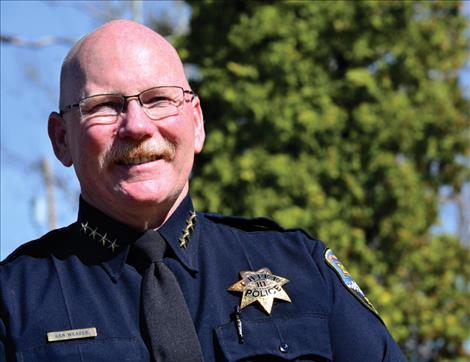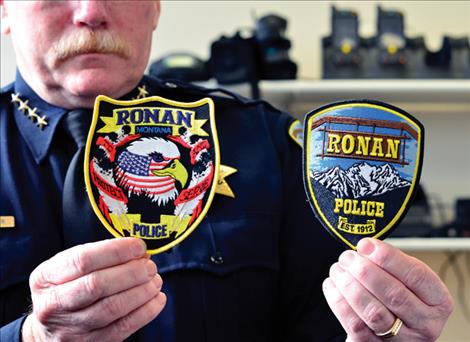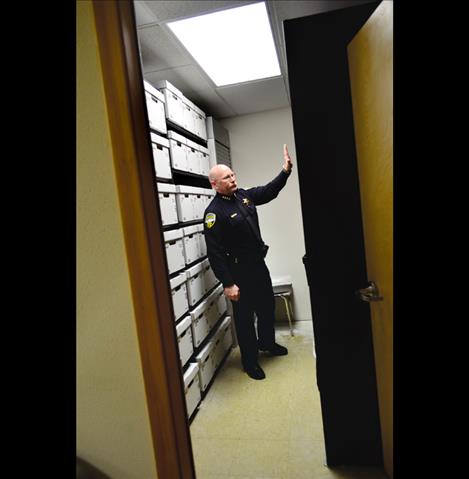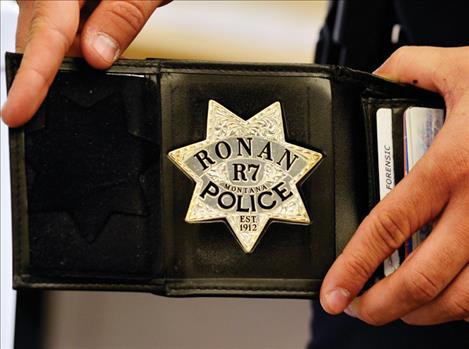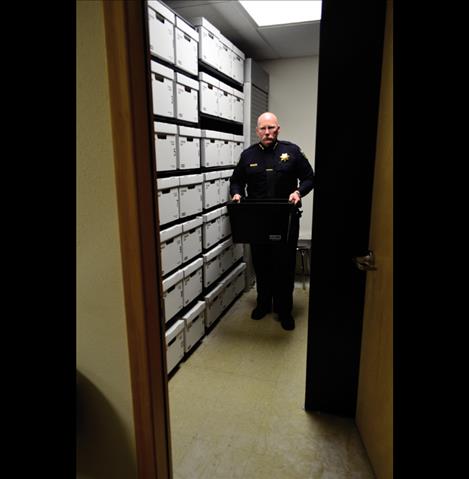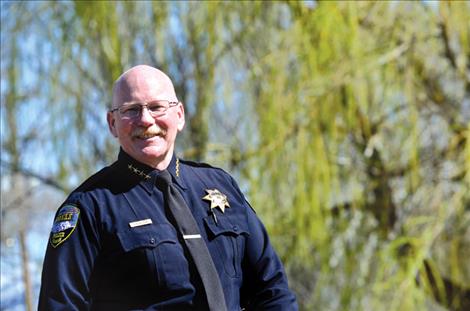Police chief improves department, brings back reserves
Hey savvy news reader! Thanks for choosing local.
You are now reading
1 of 3 free articles.
RONAN – Much has changed at the Ronan Police Department in the past year and a half since Chief Ken Weaver took over amid problems with reserve officer training credentials and public trust issues.
“I did research and knew what I was getting into,” he said of taking the job. “I didn’t know the depth and the breadth until I was able to roll up my sleeves and get into it, but I like challenges.”
Chief Weaver began his career as an officer in 1984 in California. In college, he studied architecture until a chance encounter changed the direction of his life.
“The highway patrol came in and did a presentation, and I was in awe,” he said. “I had a great respect for what they did.”
He decided to switch his course of study to criminal justice, and he made his way through the police academy. Weaver eventually retired as captain of the Vallejo Police Department in California after 28-and-a-half years of service. During that time, he was awarded officer of the year and he received a good conduct medal.
But as it turned out, he discovered that he wasn’t ready to retire, so he looked for another job. Montana was his usual vacation retreat for hunting and fishing with his wife and three sons, and when he found out that a town in the state needed a police chief, he applied for the job.
Chief Weaver said he once worked in a police department with 158 officers in California, so it was a bit of a change coming to a town where he would build a department with four officers plus himself.
“Is it different? Yes,” he said, “and I love it.”
The first thing he did when he came to the department involved crime scene evidence.
“I tackled the property and evidence room,” he said. “It was in the basement. The water table here is not stable, and I don’t need moldy or water damaged evidence, so we brought that upstairs.”
Officer Trevor Sheridan added that the evidence room in the basement needed some work before it could be moved.
“It was an unorganized mess,” he said.
The officers took about a month to catalog and organize every item, and a new evidence room was designed upstairs behind several locked doors.
“For now, I’ve got the only key,” Weaver said.
Chief Weaver also spent a lot of time reviewing department policy, and then he literally rewrote the book.
“When I got here, I found three policy procedure manuals,” he said. “I didn’t know which one they were following. I read through them, updated policy and made one book.”
Officer uniforms have also changed. Everyone wears the same navy blue color, now, but the biggest change is the patch on their sleeves. The officers created a design that reflects the town of Ronan with a picture of the entryway arch over a mountain background. The design was added to decals on the police cars, business card and above the police station doorway.
“I did some research and the first marshal was established here in 1912,” he said of the year across the bottom of the patch.
The Chief also ordered new badges with a seven point star pattern for each officer with their corresponding numbers.
And he is bringing back the reserve officer program. In September of 2013, the program was suspended amid confusion about training, compensation and how much authority reserves had, but the council gave the chief the green light to organize the program again, and on Friday, March 8, officers began interviewing candidates for the reserve program.
“I don’t like to give up on things,” Weaver said. “I like to find ways to make things work. I know this was a big decision. Even with the mistakes in the past, but do we just end this? We need to learn from those mistakes and improve on them.”
Weaver went back to the drawing board and found a new training program for the reserves.
“I found a reserve training program in Helena,” he said. “We will be sending our reserves to the community college in Helena for training and we are paying for it.”
The Montana Public Safety Officer Standards and Training Council has a set of guidelines for reserves that Chief Weaver is following.
“It says they need 88 hours of training to be reserves,” he said.
And when the reserves finish training, they will be supervised by an on-duty full time officer. Reserves are able to make arrests and drive police cars with training and supervision.
“They can’t carry a gun unless they qualify by taking additional training,” he said. “This isn’t a job you can pick up overnight. It comes with great liability and responsibility. They need training for everything. If they haven’t been trained on something, they won’t be doing it.”
Chief Weaver’s reserve officers will need to go through a background check, mental and physical exams by medical providers, an interview with current officers and a final interview with the chief before they go through the training program. They also have to be residents of Lake County, and the position is completely volunteer-based without pay.
“We want the cream of the cream of the crop,” he said, adding that many people go through the process because they are thinking of making a career of law enforcement and want to find out if it’s a good fit before going to the academy.
Chief Weaver said that training isn’t just for reserves. He is also requiring full time officers to get advanced training in things like domestic violence procedures. Officers can also choose fields of training that they are interested in like drug recognition classes and advanced firearms training.
“Training is so important,” he said. Training keeps people safe, he said, and it ensures that everyone understands the same procedures.
As far as technology, the department now has an updated electronic citation system that can scan driver’s licenses and record ticket information as opposed to the hand written system officers were using. Chief Weaver wants to add an accident exchange system to it in the future and he hopes to upgrade the cameras officers currently wear.
Weaver is also working on finding funding through grants or a levy to bring in an additional full time officer to ensure that current officers get adequate time off.
“I have guys currently serving their country in the military, and I support that, but with that comes commitments when they have to go on drill assignments, and I still need someone on call here when citizens need help.”
Officers also plan to do more of what they already do like emergency food bags and reading programs with kids.
“We want people to know that we are a part of this community and we want to help,” he said.
Chief Weaver also wants to repair public trust issues so that the community feels like they can work with the department and feel safe.
“A problem with public trust started a few years ago, and I want to move forward,” he said. “I don’t want there to be a blue barrier between us and them. I want to increase safety, decrease violence, and continue community outreach.”
The Ronan Police Department is hosting another “Coffee with the Chief” for residents to meet Chief Weaver, learn about the department, and talk about concerns. The next meeting is on Tuesday, May 17, at Dobson Creek Coffee Company’s new location at 62599 U.S. Highway 93, from 9-10 a.m.















